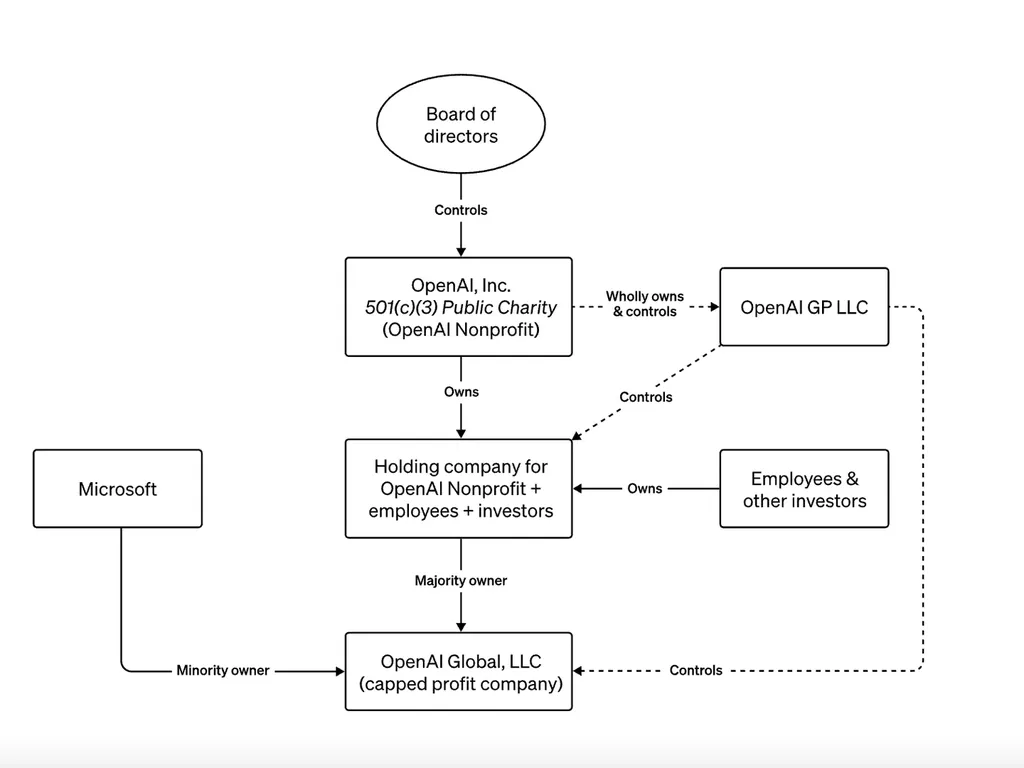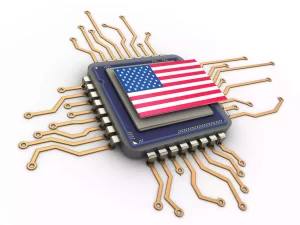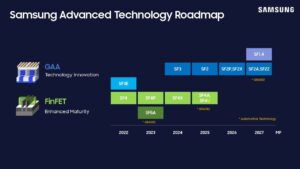Introduction:
OpenAI, a trailblazer in artificial intelligence research, has found itself in the midst of a leadership crisis that has captivated the attention of employees, investors, customers, and the broader tech community after firing of Sam Altman.
At the center of this storm is the absence of Sam Altman, the former CEO, whose potential return is fervently desired by various stakeholders. However, a seemingly immovable obstacle stands in the way—OpenAI’s board of directors.
Join Our WhatsApp News for updated information on semiconductors & AI
The Unique Corporate Structure:
OpenAI’s corporate structure is unconventional, designed to prioritize long-term AI research over immediate profits.
The founders entrusted an independent board of directors with full decision-making power, placing them at the apex of the organization.
Below the board, there are two entities: the non-profit OpenAI and the for-profit OpenAI.
The former focuses on advancing AI research for the benefit of humanity, while the latter, where Microsoft invested a significant 13 billion dollars, engages in more commercially oriented ventures.
Meta, formerly Facebook, along with Google and other companies, follows a structure opposite to OpenAI’s. These tech giants grant founders unparalleled control over the company and the board of directors, achieved through a distinct class of voting shares inaccessible to the general public. This approach takes inspiration from Berkshire Hathaway, which established a dual-class stock system to shield the company and its leaders from the influence of short-term profit-focused investors.
OpenAI, on the other hand, has articulated its mission as the safe development of artificial intelligence surpassing human intelligence. Controversies have arisen around this objective, raising questions about potential conflicts with the company’s growing commercial success.
Read More: OpenAI: A Chronology of Events from Humble beginnings to AI Superpower
Sam Altman Desirability and the OpenAI Board’s Opposition:
The desire for Sam Altman’s return is unanimous among employees, investors, and even Microsoft. However, the board has staunchly resisted this clamor, leaving many puzzled about the reasons behind their opposition.
Altman, known for his entrepreneurial spirit and leadership, is seen as the ideal candidate to navigate OpenAI through the rapidly evolving AI landscape. His preference for the startup environment aligns with the ethos of OpenAI, but the board appears unmoved.
Read More: Sam Altman is not Returning to Open AI; Joins Microsoft to lead AI Research
The OpenAI Board’s Unyielding Stance on Sam Altman:
Despite mounting pressure from various quarters, the board remains steadfast in its decision not to reinstate Sam Altman as CEO.
This unwavering stance persists even in the face of threats such as mass employee resignations, Microsoft’s potential withdrawal of server and GPU access, and the shift of customers to competitors like Anthropic.
The board has installed the founder of Twitch as an interim CEO and is actively considering other candidates, including the founder of Anthropic and a former GitHub CEO.
The current board of OpenAI includes:
- Ilya Sutskever, OpenAI’s chief scientist
- Adam D’Angelo, CEO of Quora
- Helen Toner, an AI and national security researcher at Georgetown University
- Tasha McCauley, technology entrepreneur
- Mira Murati, Interim CEO of OpenAI
Read More: 10 Founders Fired from Their Own Empires
The Dilemma of Accountability:
The heart of the matter lies in OpenAI’s unique corporate structure. The board, composed of external experts, was intended to ensure that the organization remains committed to AI research rather than succumbing to profit-driven motives.
So basically, the structure is like board is at the top, below that is the non profit openai, and at the bottom is the for-profit openai.
Microsoft invested 13 billion in the for-profit openai, the bottom-most part. Sam was the CEO of the bottom-most part. Employees own shares in the bottom-most part.
The board sits on top of all of them. They are not answerable to anyone. Not employees or investors or customers. All power rests with them.
However, this structure has inadvertently created a situation where the board holds absolute power and is unaccountable to employees, investors, or customers.
Read More: How a Google Research Paper gave birth to its Rival, ChatGPT
The Future of OpenAI’s Leadership:
As OpenAI navigates through this challenging period, questions about the board’s motivations persist.
While the initial intent behind an independent board was to safeguard the organization’s mission, the current situation raises concerns about the lack of accountability and transparency in decision-making.
The board’s selection of a new CEO will undoubtedly shape the future direction of OpenAI, and the tech community keenly watches for developments that may shed light on the intricacies of this unique corporate structure.
Read More: Altman’s Frankenstein Moment: The End of ChatGPT?
Conclusion:
The saga of Sam Altman’s absence from OpenAI’s CEO position underscores the delicate balance between maintaining a focus on AI research and addressing the desires of key stakeholders.
As the board continues to chart the course for OpenAI, the need for transparency, accountability, and a clear communication strategy becomes increasingly evident.
The unfolding events at OpenAI serve as a case study in corporate governance, sparking discussions about the implications of giving unchecked power to an independent board in a mission-driven organization.








